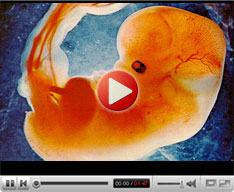
Know Infertitlity
Infertility treatments
Diagnosing InfertilityMale:
Obstetrics and Gynaecology
Infertility Treatment Services
Andrology |
In-Vitro Fertilization (IVF)In-vitro fertilization (IVF) is the process of fertilizing eggs with the sperm outside of the human body. In infertile couples where women have blocked or absent fallopian tubes or where men have low sperm counts, the technique of in-vitro fertilization (IVF) offers a chance at parenthood to couples who until recently would have had no hope of having a "biologically related" child. In IVF, eggs are surgically removed from the ovary and mixed with sperm outside the body in a Petri dish. After a gap of 40 hours, the eggs are examined to check if they have been fertilized by the sperm and are dividing into cells. These fertilized eggs (embryos) are then placed in the uterus of the woman, thereby bypassing the fallopian tubes. Although IVF procedure received lot of media attention when it was first introduced in 1978, it now actually accounts for less than five percent of all infertility procedures in India. Once fertilized, the resulting embryos are placed back in the woman's uterus with the hope that a successful pregnancy will follow.  The IVF procedureIVF is not a single step procedure but rather involves a series of steps that spans over many weeks. The following steps are involved in this procedure:
The fertilization of an egg by a sperm gives rise to a zygote or pre-embryo which is kept in the incubator for about two to five days where it continues to grow and divide. Once the embryos have grown to an appropriate size, one or two will be implanted in the woman's uterus at the right time in her menstrual cycle. This procedure (also called embryo transfer) involves passing a very fine plastic tube called catheter through the cervix and into the uterine cavity under ultrasound guidance. It is a painless technique and no anaesthetic is usually required. Pregnancy test resultsTwo weeks after the transfer, a couple of blood tests aredone to determine if the woman is pregnant. Possible risks and side effectsThe increase in the hormone oestrogen can cause slight nausea, dizziness, breast tendernessand abdominal swelling.In some cases, a large number of follicles develop and the levels of the hormone oestrogenincreases significantly, thereby causing a condition called ovarian hyperstimulation syndrome (OHSS). Symptoms includenausea, vomiting, marked lower abdominal pain and swelling and shortness of breath. |
Our TeamNews & EventsClinic LocationVideo Gallery |















